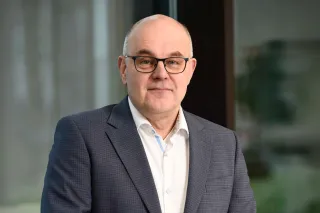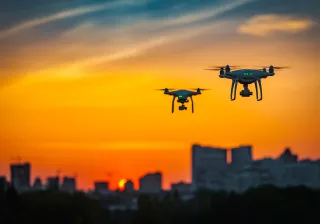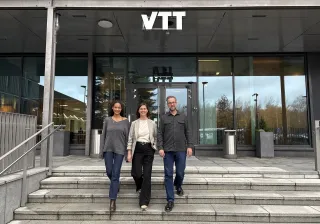As technology develops, critical applications of information networks face new threats. Artificial intelligence and automation pose cybersecurity risks, but also offer means to protect them. A Finnish research consortium develops solutions for these challenges as part of the European AI-NET-ANTILLAS project. As a result, several concepts have emerged for the security of critical infrastructure.
The development of information networks affects cyber security. This calls for new solutions to secure critical applications. A Finnish research consortium develops these solutions together and VTT coordinates the work of the consortium.
– In our own research, we focus on how 5G and 6G networks can be attacked and how artificial intelligence can be utilized for cyber surveillance of the network. We also explore ways to ensure the security and trustworthiness of AI algorithms, applications and platforms, and field trial emerging solutions, explains Jani Suomalainen, Senior Scientist at VTT.
The research consortium has jointly developed several concepts that have been successfully tested. The solutions were presented in May at the mid-term review of the project in Paris.
Satellite connections and the automation of tactical network services secure communication of the public safety authorities
The communication of the authorities that are responsible for the safety and security of society – for example the police, rescue authorities and the border guard – must also be ensured during cyber-attacks, natural disasters or other problems. The availability of network services for public authorities can be ensured with satellite connections and quickly set-up tactical 5G/6G networks, where the orchestration, i.e., installation and configuration, of cybersecurity and core services are automated.
The project field tested the use of LEO satellite constellations in communication between authority users. Broadband satellite networks provide superior coverage with capacity and small latency that can support high-quality group communications, new situational awareness applications, and large amount of IoT devices. The project investigated the cyber security and durability of satellite concepts and tested the quality of the connections.

Tactical communication can be based on different service architectures. When ensuring the sustainability of society's critical functions, it is important that information security solutions and the core services of 5G networks work reliably in different environments, in the cloud and at the edge of the network. The research consortium has explored how services can be quickly and safely brought to different environments when necessary, and how their operation can be automated and optimized. The project has also developed the concept and prototypes for confidential computing to bring critical services to environments that are not fully trusted.
– Eficode is working on a general service and network orchestration solution that enables easy automatic environment selection and service base creation. The reliability of the services and their underlying infrastructure is central to communication between authorities, or secure communications in general. Eficode's solution ensures that critical services are run in jointly defined operating environments and their operational reliability is secured in all situations, says Digital Transformer Tuomas Leppilampi from Eficode.
Situational awareness enriched by edge intelligence and scalable data security for critical IoT devices
Applications based on AI and implemented at the edge of the network enable new ways to utilize function-critical devices that need support from the network for managing information security and for optimized decision-making. For example, unmanned aerial vehicle technology opens up new opportunities in transportation and surveillance tasks, as well as for creating a situational picture for public safety authorities and in smart cities.
The project is developing a concept where navigation based on image recognition and AI for situations where satellite positioning is unavailable. The solution has been tested on the coast, in national parks and in Lapland during the snowy season.

The project has also researched combination of low-energy sensor and AI technologies for environment monitoring and waste management. The research is focused on applying AI for surface level measurement, cybersecurity challenges and the utilization of AI in IoT devices that have limitations in terms of power supply and performance.
Critical infrastructure and tasks require devices whose reliability and identity must be ensured. When the number of devices is large, identity management becomes complex. Automation improves the situation and the scalability of solutions. A large number of devices can be managed with the help of the certificate management automation methods developed in the project. The solution can be used, for example, to prevent unauthorized use of lost devices or to replace damaged devices with new ones.
– In Insta’s case, the research project focused on solving challenges and finding benefits related to the automation of certificate lifecycle management: enrollment, discovery, status monitoring, and renewal of certificates. Based on the results of the study, we can already state that the number of human errors will decrease with automation, and the costs of operating the infrastructure will decrease significantly, says Senior Manager Juho Heikkinen from Insta Advance Oy's Cyber Security business unit.
More focus on international cooperation
The research project aims to promote digitalization in Europe by means of intelligent and safe automation of communication networks. The project is now strengthening international cooperation between research consortia. For example, workshops are coming up where partners from different countries can share information and find synergies for development work.
– Together with a German research consortium, for example, we are exploring how AI can be used to improve and optimize the operation of information networks and to bring them more intelligence. The information security challenges of the intent-based networking paradigm have been under research, among other things. From Finland's point of view, it is important that cyber security is sufficiently taken into consideration in international cooperation as well, Suomalainen says.
Further information on the project:
AI-NET-ANTILLAS is a Celtic-Next cooperation project involving partners from Finland, France and Germany. The Finnish consortium coordinated by VTT includes Airbus, Centria, Eficode, Goodmill Systems, Huld, Insta DefSec, iProtoXi, WithSecure and Xiphera. In Finland, the project is funded by Business Finland. The project will end in 2024.





